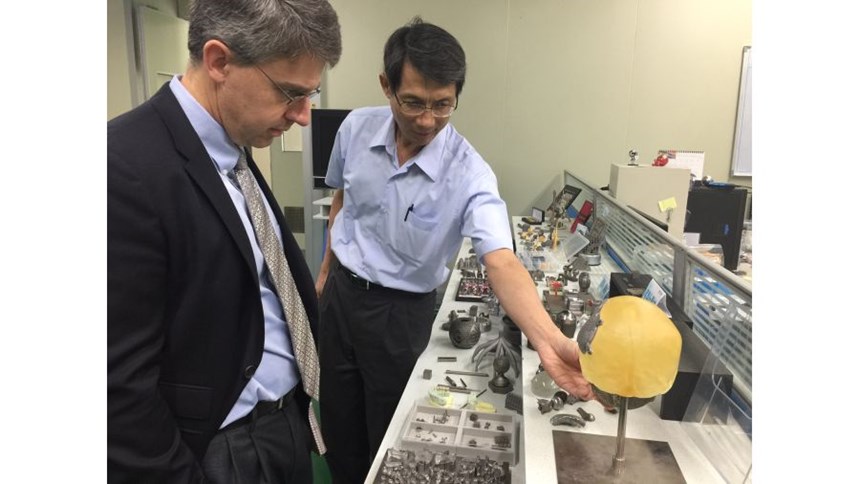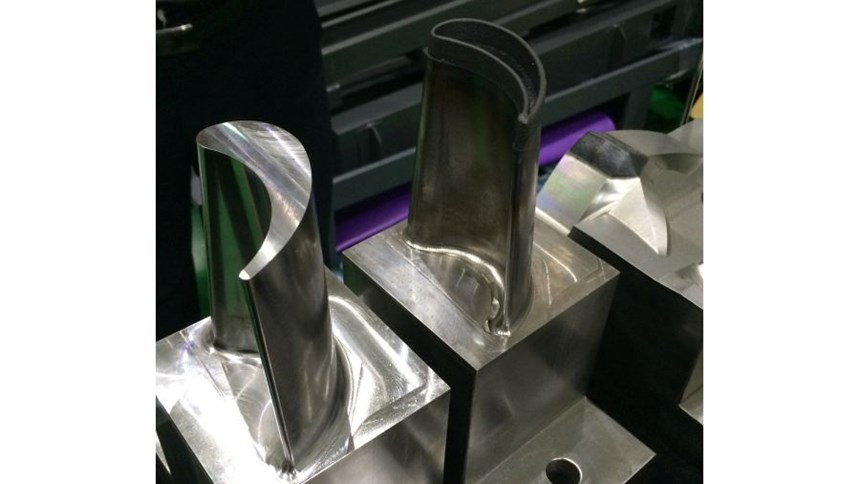Toward a Made-in-Taiwan Metal Additive Machine
Reducing the cost of AM is a primary aim of the effort, but the research has also led to technology innovation.
In Taiwan, the Industrial Technology Research Institute (ITRI) has been working with Taiwanese companies including machine tool builder Tongtai and material suppliers such as Chia Yi Steel to develop native powder-bed and direct-deposition additive manufacturing machines as well as the raw material to support them. I saw the powder-bed and direct-deposition machines during a recent visit to Taiwan that included stops at both Tongtai and ITRI.
Cost savings is a primary goal of the development effort around additive. ITRI hopes to reduce the cost of applying additive manufacturing for part production. The group expects a made-in-Taiwan additive manufacturing machine to have a pricetag 50 percent lower than that of comparable AM machines made elsewhere. However, technology advances have come from this work as well.
On the direct-deposition machine, development is still underway. At Tongtai’s Kaohsiung City factory, a CNC machining center is being used to experiment with and prove out a head for controlled deposition of metal. Repair of existing parts is seen as perhaps the most promising potential application. On a machine tool equipped with this capacity, the worn or broken feature of a part could be machined away and then, in the same cycle, a like-new feature could be grown in its place. Much of the testing has simulated this application. (See photo stream.)
The powder-bed machine is farther along. I saw this at ITRI’s Additive Manufacturing & Laser Application Center in Tainan City. The laser sintering machine offers a work envelope of 250 × 250 × 320 mm, and the center’s director, Dr. Jibin Horng, says the machine is nearly ready for commercialization.
One capability this machine might include in the future involves an innovation that ranks among the finalists for this year’s R&D 100 Award. Researchers at ITRI have developed a technique for optical control over the material grain structure of the part as it forms during the additive build. Dr. Horng says the technique offers a potential solution for stress-related distortion. As the part grows, changes to the laser beam can be used to manage distortion by generating different microstructure in different regions of the part.
Related Content
-
How Norsk Titanium Is Scaling Up AM Production — and Employment — in New York State
New opportunities for part production via the company’s forging-like additive process are coming from the aerospace industry as well as a different sector, the semiconductor industry.
-
With Electrochemical Additive Manufacturing (ECAM), Cooling Technology Is Advancing by Degrees
San Diego-based Fabric8Labs is applying electroplating chemistries and DLP-style machines to 3D print cold plates for the semiconductor industry in pure copper. These complex geometries combined with the rise of liquid cooling systems promise significant improvements for thermal management.
-
ActivArmor Casts and Splints Are Shifting to Point-of-Care 3D Printing
ActivArmor offers individualized, 3D printed casts and splints for various diagnoses. The company is in the process of shifting to point-of-care printing and aims to promote positive healing outcomes and improved hygienics with customized support devices.






















